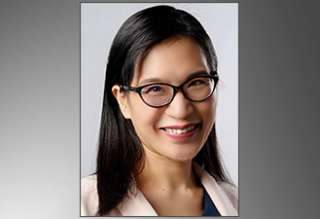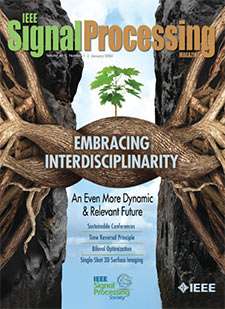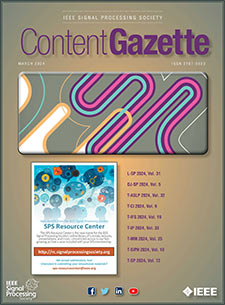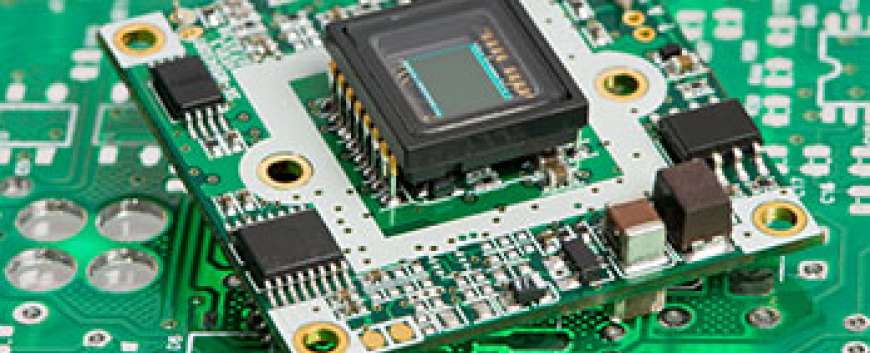The "Light" Side of Signal Processing: Research Teams Work Toward a Signal Processing-Enabled Photonics Future
Top Reasons to Join SPS Today!
1. IEEE Signal Processing Magazine
2. Signal Processing Digital Library*
3. Inside Signal Processing Newsletter
4. SPS Resource Center
5. Career advancement & recognition
6. Discounts on conferences and publications
7. Professional networking
8. Communities for students, young professionals, and women
9. Volunteer opportunities
10. Coming soon! PDH/CEU credits
Click here to learn more.
The "Light" Side of Signal Processing: Research Teams Work Toward a Signal Processing-Enabled Photonics Future
As the size and speed of many conventional electronics technologies begin reaching their practical limits, a growing number of researchers is turning their attention to photonics and related optical-based approaches to continue the push toward smaller, faster, cheaper, and more innovative computer and communication devices.
Building on an already lengthy and impressive track record, signal processing is now playing a critical role in the development of new optical communication processes. Digital signal processing (DSP), for instance, is widely viewed as the catalyst for the “coherent revolution” that paved the way for optical telecom networks in the mid-2000s. Now, signal processing is playing a role in research that promises to lead to denser and faster microchips, more efficient networks, and other important technology innovations.
Easing the Microchip Squeeze
Building faster computers requires squeezing ever more transistors onto microchips. Steady downsizing also demands microprocessor internal wiring to be packed increasingly tightly. That’s not particularly desirable, since excessively tight wiring can lead to signal leakage between components, hindering communication between various chip parts. The phenomenon, known as the interconnect bottleneck, threatens to impede, and perhaps even eventually block, microprocessor evolution.
Addressing this concern, Massachusetts Institute of Technology (MIT) researchers are investigating the possibility of using light rather than wires to provide communication across different parts of a microchip. Yet achieving this goal is a heady task, given the fact that silicon, the material used to build chips, strongly resists light emission. 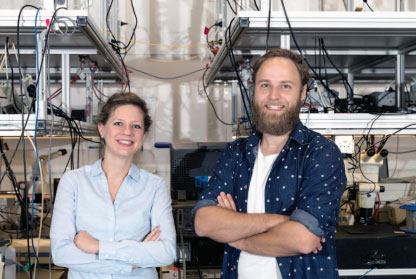
Working on the project to create a light emitter and detector that can be directly integrated into silicon complementary metal– oxide–semiconductor (CMOS) chips are Yaqing Bie, an MIT postdoctoral associate, and Pablo Jarillo-Herrero, an associate professor of physics at MIT (Figure 1). The project leaders are supported by an interdisciplinary team including Dirk Englund, an associate professor of electrical engineering and computer science at MIT.
Silicon-compatible light sources and detectors have been studied for years, Bie notes. She now believes that a device built from a semiconductor material called 2H-molybdenum ditelluride (MoTe2) could provide the answer. The ultrathin semiconductor belongs to an emerging group of materials known as two-dimensional transition-metal dichalcogenides. “Our technique is a CMOS-compatible method, and the most distinct feature is the use of a two-dimensional crystal, which enables small footprints and emits light at 1 1. . nm “We are trying other layered semiconductor materials and heterostructures to explore other frequency ranges for optical communications,” Bie says. “We are also trying to improve the light source and coupling efficiency by integrating with nanocavities.”
SPS on Twitter
- DEADLINE EXTENDED: The 2023 IEEE International Workshop on Machine Learning for Signal Processing is now accepting… https://t.co/NLH2u19a3y
- ONE MONTH OUT! We are celebrating the inaugural SPS Day on 2 June, honoring the date the Society was established in… https://t.co/V6Z3wKGK1O
- The new SPS Scholarship Program welcomes applications from students interested in pursuing signal processing educat… https://t.co/0aYPMDSWDj
- CALL FOR PAPERS: The IEEE Journal of Selected Topics in Signal Processing is now seeking submissions for a Special… https://t.co/NPCGrSjQbh
- Test your knowledge of signal processing history with our April trivia! Our 75th anniversary celebration continues:… https://t.co/4xal7voFER


